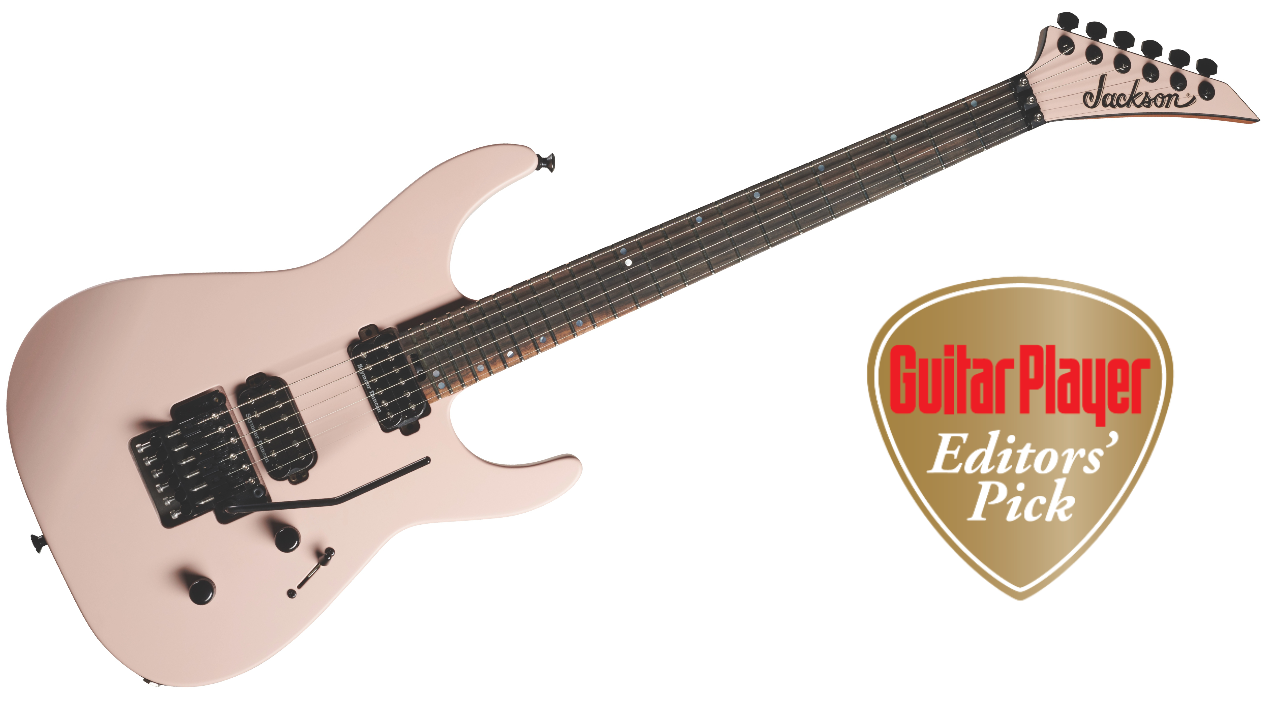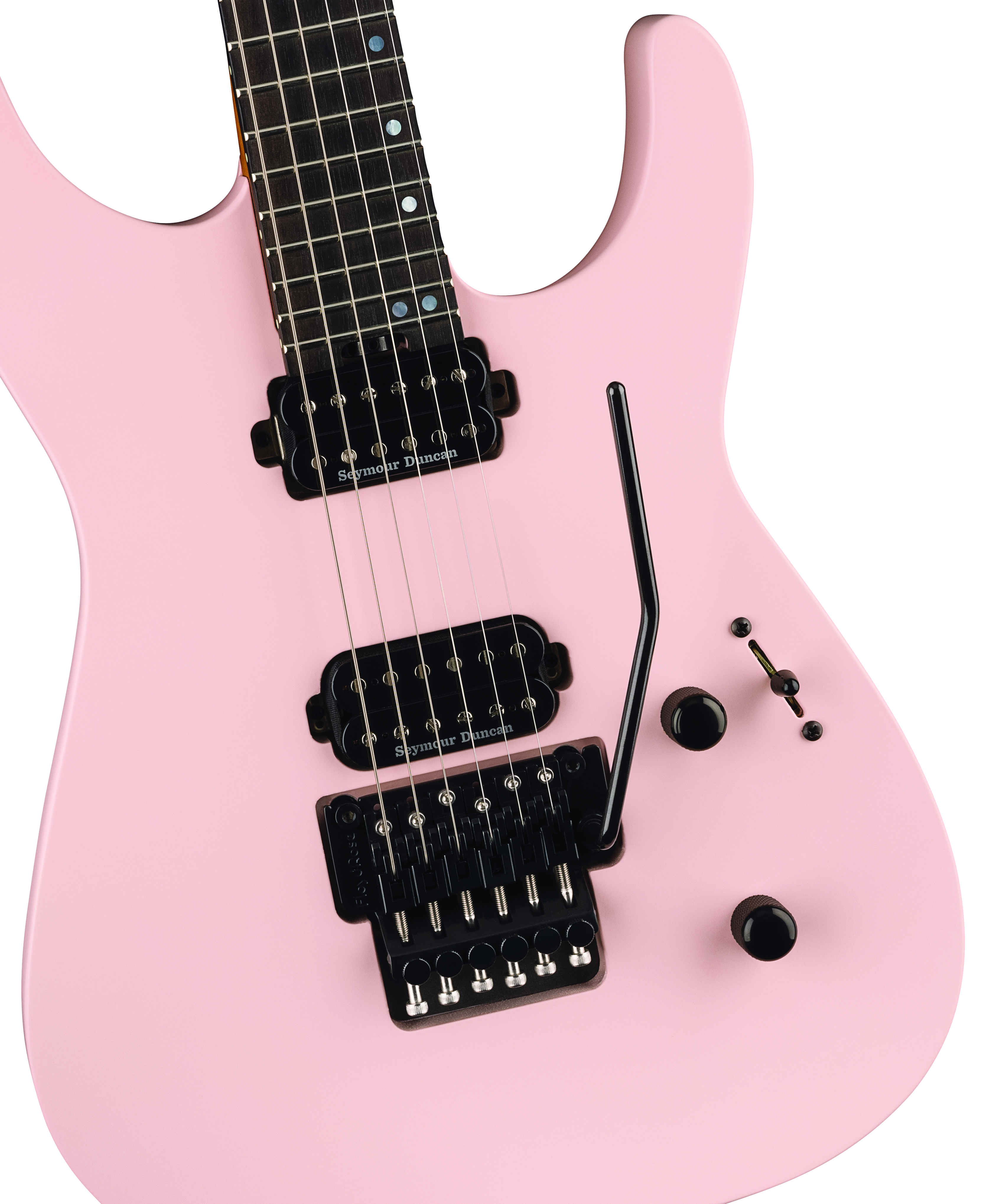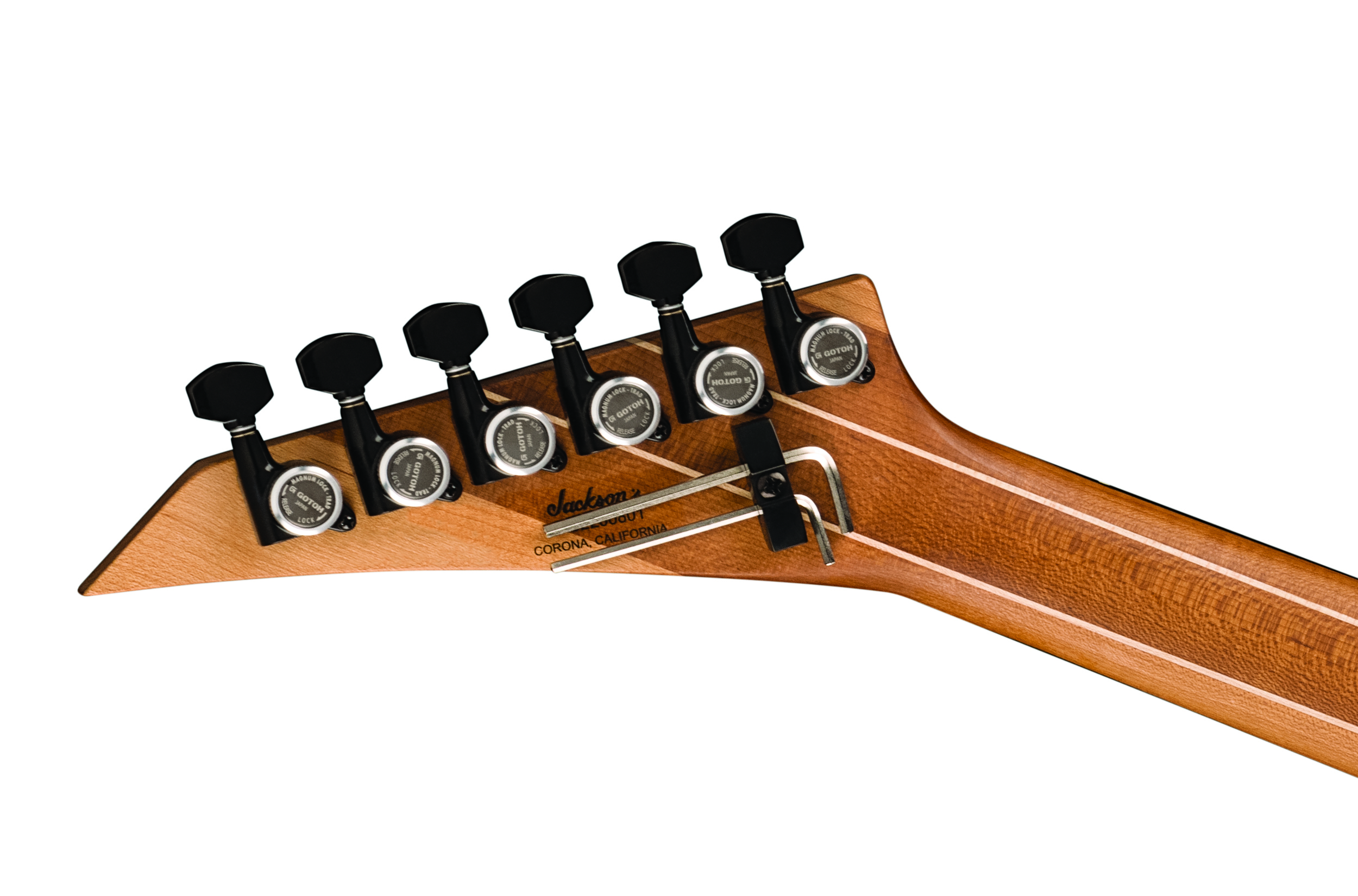“If a modern shred axe with a bayonet-sharp headstock and a floating Floyd suits your musical vibe, you’ll be thrilled with how useful this new guitar is”: Jackson American Series Virtuoso review

For a long time, aside from buying pre-owned, the only way to get a coveted U.-built Jackson was to order one from Jackson USA, and then wait. And wait. Essentially a custom shop, busy Jackson USA has been known to take as long 18 months to fill orders. That all changed a year and a half ago when Jackson introduced the American Series Soloist SL3, the first U.S.-built production model Soloist available. Now that guitar has a baby brother: the new Jackson American Series Virtuoso.
As is the case with many siblings, both of these U.S.-built Jacksons come from the same “womb” – the Jackson wing of Fender’s Corona manufacturing facility. And yes, as you’d expect with two brothers, the Virtuoso and the Soloist have several core traits in common.
These include a wide-radius, shred-friendly ebony fretboard replete with two octaves worth of fat, slippery nickel rails, a Floyd Rose locking trem, a pair of headstock-mounted Floyd-friendly hex wrenches, and locking tuners – unnecessary when playing a locking-nut guitar such as this, but welcome during string changes. (Read: Less twisting of the tuners!)
Not-so-obvious genetic commonalities include a pair of internal graphite rods flanking the truss rod inside the neck that span approximately the first through 19th frets (to increase neck rigidity), a lack of truss-rod cover behind the nut – which gives the headstock a cleaner look – and Luminlay side dots (glow-in-the-dark fret markers that both look cool and help you navigate the neck any time the lights go out) on the edge of the fretboard.
And when the lights are bright, there’s another trait that subtly adds to the badass look of these six-string sibs: stainless-steel bolts in the bridge and a locking nut that contrast nicely with the otherwise black Floyd Rose hardware.
Twins, however, these two guitars are not. They’re different in some striking ways. For instance, while both axes sport a rock/metal-ready Seymour Duncan JB TB-4 humbucker mounted directly on the wood of the body in the bridge position, the Virtuoso’s JB is joined not by two single-coils (as is the case with its older brother’s configuration) but by another direct-mounted humbucker.
While this neck ’bucker (a Duncan ’59 SH-1) may not match the fluty midrange offered by some single-coil neck pickups, it makes up for it with a wider, full-spectrum tonal girth that overdrives nicely, and a balanced output that matches the JB volume-wise.
All the latest guitar news, interviews, lessons, reviews, deals and more, direct to your inbox!
However, the Virtuoso’s biggest departure from the Soloist is not the pickup arrangement but rather the neck.
Sure, the Virtuoso still has the scorpion-tail headstock that screams to your audience, “You’re about to be injected with a lethal dose of molten metal.” But the fretboard’s simple- and modern-looking pattern of offset mother-of-pearl dots projects a more sophisticated – perhaps virtuosic? – musical vibe than the more aggressive-looking shark-tooth inlays found on other Jacksons. This new Jackson says, “Yes, you’re gonna get some shred, but you also may hear other styles.”
Flip the Virtuoso over and you’ll be struck by the neck’s eye-catching five-piece construction.
Featuring two thin slices of light-colored maple sandwiched between three thicker maple slabs, it has as many laminations as some cutting boards. But while the neck’s shred-approved “soft D” shape is almost flat enough in the center to accommodate you dicing a few chives on it, the purpose of this quintet of opposing grains is actually – with help from those graphite rods – to ensure there is almost zero neck flex, even when you push on the back of headstock, thereby improving sustain and making tunings more stable.

Most dramatically, whereas the Soloist’s three-piece neck melts seamlessly into its body and continues all the way through to its rear strap button, the Virtuoso’s neck bolts on around the 18th fret, a practice many luthiers feel gives notes a slightly snappier, more immediate sound. And while the newer Jackson neck is a bolt-on, the high frets are easily accessible, thanks to ergonomically friendly, rounded wood where the body welcomes the neck and recessed bolts in a trapezoidal arrangement.
The first time I pulled the Virtuoso out of its included case – a handy, lightweight, hard-foam rectangle that in some ways feels more like a kickass gig bag than a case – I was surprised by two things: how much I love the muted, limelight-friendly Satin Shell Pink matte finish (it’s probably my favorite Virtuoso color), and how stellar the guitar’s playability is. With super-speedy, super-low (but not Lamborghini low) action, each note lands nimbly on the frets and with plenty of sustain.
Notes bend with satisfying smoothness everywhere on the Virtuoso’s long, flat ebony runway. While a neck radius this wide may leave more traditional guitarists a bit cold (a more rounded radius is better suited for old-school strumming and riffing), I could get through a four-set cover gig on this versatile guitar with ease, though it might look a little out of place on the jazz ballads.

Indeed, it’s hard rock and metal that is the Virtuoso’s natural calling. Whether I plugged it into a high-gain Friedman JEL-20 head in my home studio or a BluGuitar Amp1 powering a Marshall 4x12 at a rock gig on the Sunset Strip at the Whisky a Go Go, this guitar roared authoritatively and articulately, no matter what the pickup setting – although 90 percent of the time, like just about anyone playing a so-called Superstrat, I was rocking that delicious bridge JB.
Boasting a low-friction (read: utterly rattle-free) push-in vibrato arm, the Virtuoso’s perfectly set up floating tremolo – a prerequisite for getting everything from “vocal” vibrato (the kind that goes below and above the note in pitch) as well as soaring reverse dive-bomb effects – unlocks another level of musical expression on the Virtuoso.
Despite its name, the Virtuoso may not be suited for all the genres that a true musical virtuoso can handle, but what guitar is? If a modern shred axe with a bayonet-sharp headstock and a floating Floyd suits your musical vibe, you’ll be thrilled with how useful this new Jackson is.
Priced at just under two grand (it’s got its big brother beat there!), the Virtuoso is a welcome addition to the Jackson American Series family – a small, two-guitar family, yes, but a family nonetheless. And a family that this guitar journalist predicts will keep growing.
Specifications
American Series Virtuoso
CONTACT Jackson Guitars
PRICE $1,949–$1,999
NUT Floyd Rose locking, 1.6875” (42.86mm) width
NECK Five-piece graphite-reinforced “soft D shaped” baked maple bolt-on
FRETBOARD Streaked ebony, 25.5” scale, 12”-16” compound radius
FRETS 24 Sanko nickel silver jumbo
TUNERS Gotoh MG-T locking
BODY Alder, available in Satin Shell Pink, Satin Black (matte finishes); Mystic Blue, Specific Ocean (gloss finishes, $50 upcharge)
BRIDGE Floyd Rose 1500 locking with push-in vibrato arm
PICKUPS Seymour Duncan JB TB-4 humbucker (bridge), Seymour Duncan ’59 SH-1 (neck)
CONTROLS Master volume (500K), master tone (250K), 5-way blade selector switch
FACTORY STRINGS Fender USA nickel-plated steel .009-.042
EXTRAS Neck-heel-mounted truss-rod adjustment wheel, matching headstock paint, Jim Dunlop Straplok strap retainers and buttons, Luminlay luminescent side dots, headstock-mounted hex wrenches, foam-core case
WEIGHT Approx. 7.7 lbs
BUILT USA
KUDOS Fast, shred-friendly, unbendable neck and fretboard. Great sustain. Five balanced tones. Subtle fretboard markers
CONCERNS As with its sibling, the Soloist SL3, the high-friction volume pot hinders pinkie swells

Whether he’s interviewing great guitarists for Guitar Player magazine or on his respected podcast, No Guitar Is Safe – “The guitar show where guitar heroes plug in” – Jude Gold has been a passionate guitar journalist since 2001, when he became a full-time Guitar Player staff editor. In 2012, Jude became lead guitarist for iconic rock band Jefferson Starship, yet still has, in his role as Los Angeles Editor, continued to contribute regularly to all things Guitar Player. Watch Jude play guitar here.
